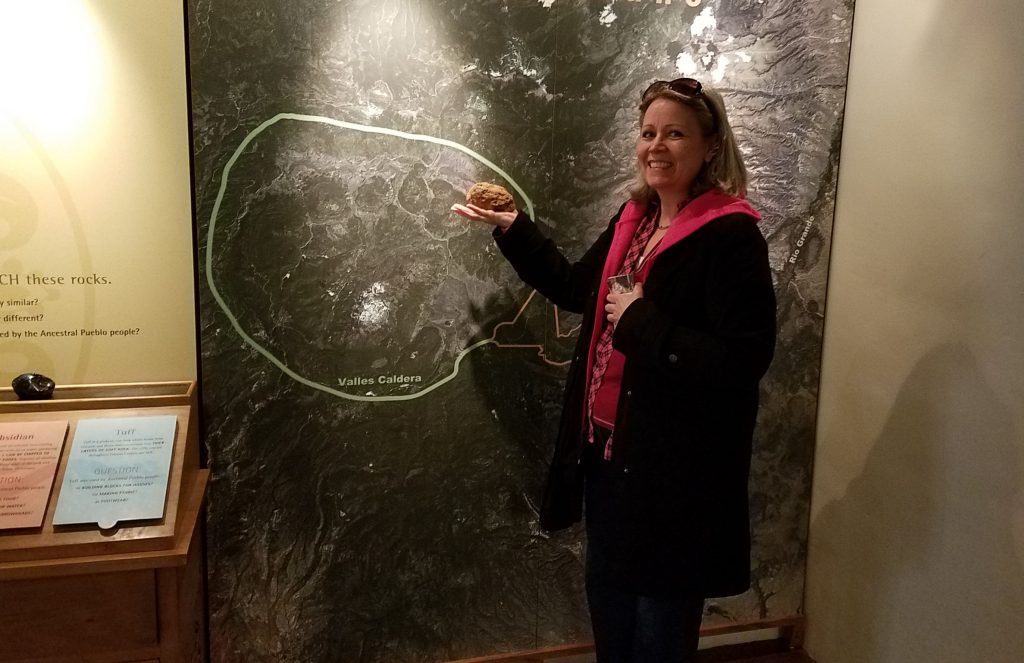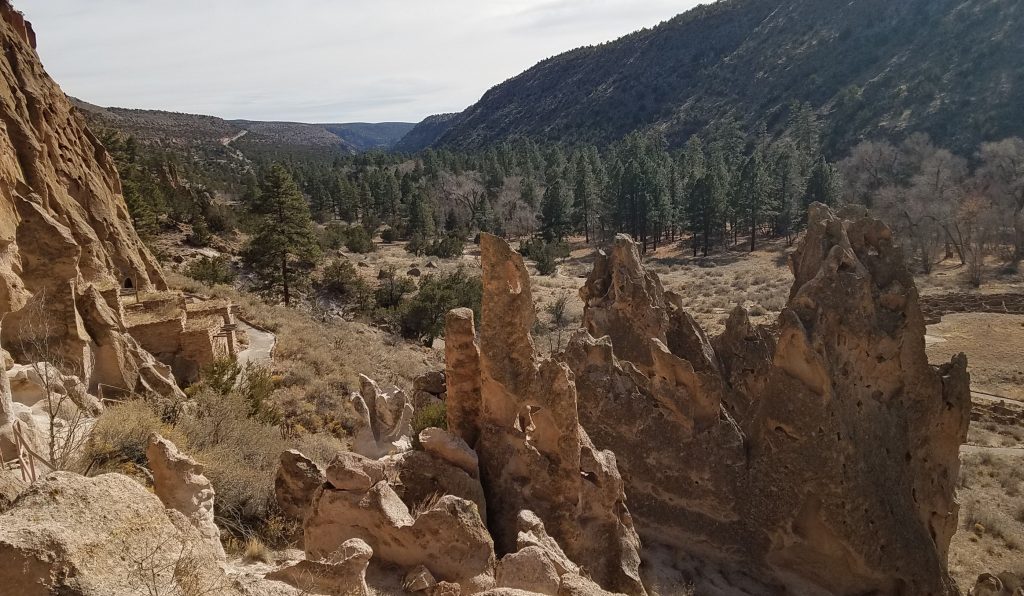
“We live in a continuum that began when we emerged from the earth and continues with our descendants. That is why time has no boundaries for us & why it is so irrelevant. We are not here to make history. We are here to live and continue history.” This is from the Affiliated Pueblo Committee and sums up their view of history. I read it at the museum at the Bandolier National Monument.
I studied history and anthropology in college and especially enjoyed the classes on theories of history. We contrasted cyclical theories of history, where history repeated in great circles to a progressive theory of history, where history was moving forward. The latter implied a beginning and an end, while the former just churned. The progressive view of history tended to be favored by adherents of the Abrahamic religions (Judaism, Christianity and Islam), since they were informed by their faiths that God created the heavens & the earth at a specific time in history, that at least some humans had duties and tasks to perform and that history was moving toward an end and a day of judgement. The ancient Greek historians were examples of believers in cyclical historical theories.

All Western historians, however, shared the idea of change and development, whether or not they thought there was progress toward an end. In fact, one of the definitions of history was that it was written by historians who analyzed trends and change. Absent this, we might have antiquarianism or chronicles that just recorded events, one darn thing after another. That is why we called Herodotus the “father of history.” Others had written before he did, but they did not look for patterns, trends or change.

Our history theory classes back in the 1970s were still very Western-centric. We did not consider Chinese, Indian or other perceptions of history. Had we done that, I don’t think we would have found them that surprising. My subsequent study of history indicates that Chinese history theory, for example, would fit mostly into the cyclical pattern, with good times followed by bad and the mandate of heaven falling moving but not changing. I don’t pretend to be an expert, but what I see I can fit into my earlier studies.

Very different would be the theory of history outlined in the Pueblo theory above. It is not a progression view of history or even a change one. Rather it is a kind of steady state, timelessness.
I mentioned that I studied history AND anthropology. One of the books assigned in anthropology was called “Language Thought & Reality” by Benjamin Lee Whorf. Whorf postulated that structure of language influenced perceptions of reality. Some scholars think this idea has been debunked and others think the debunkers have been debunked. I don’t know about that, but I do recall that he used the Hopi language as an example. He said that the structure of the Hopi language made it much easier to view time as a continuum. Western languages, on the other hand, were structured with various past and future tenses. Maybe that influenced our view of history as having a past and a likely future and featuring changed
The Pueblo idea made me think about this. I can see value in this way of thinking, but also many drawbacks. It is contemplative and that is good.
I have been thinking about the Pueblo settlements, as I visited some of the ancient sites. Yesterday went to the Pecos villages. Today we visited the ruins of villages of Ancestral Pueblo people who built homes in Frijoles Canyon at the Bandolier National Monument. They lived in the canyon for around 400 years until they exhausted the resources and abandoned the land by about 1550.
My first picture shows Chrissy with a piece of Tuff. That is compressed volcanic ash that the ancestral Pueblo used for building material. The other pictures show runs and the hills of tuff at the Bandolier National Monument.
